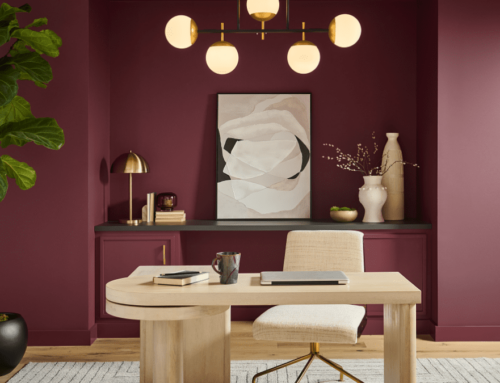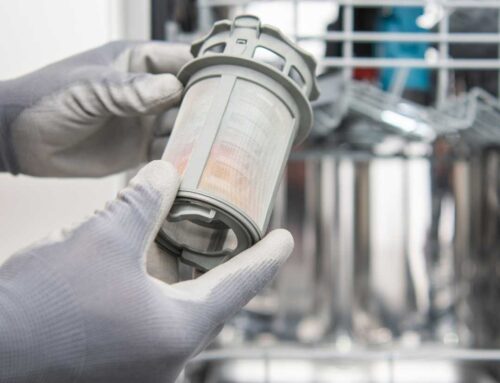We are now in the throws of hot summer days, and that means keeping your home cool can be a challenge. When temperatures exceed 90 degrees and remain that high for multiple days in a row, your home may heat up more than usual, which is normal, but there are some things you can do to improve the conditions in your home.
Change Your Air Filter Regularly
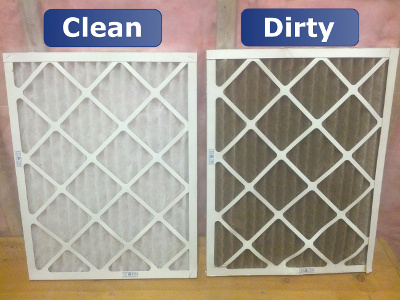 Is your air conditioner not cooling as well as it once did? Check your air filter for dirt and change it if needed. This is one of the most common problems we see with homeowners who are having issues with the A/C cooling their homes. An HVAC system needs a free flow of clean air to operate properly. If the filter is dirty and clogged, it restricts air flow into the unit. This, in turn, causes your HVAC system to not function properly and can put added strain on the system that could cause damage. Checking your air filter should be the first step in troubleshooting air conditioning (and heating in winter) issues.
Is your air conditioner not cooling as well as it once did? Check your air filter for dirt and change it if needed. This is one of the most common problems we see with homeowners who are having issues with the A/C cooling their homes. An HVAC system needs a free flow of clean air to operate properly. If the filter is dirty and clogged, it restricts air flow into the unit. This, in turn, causes your HVAC system to not function properly and can put added strain on the system that could cause damage. Checking your air filter should be the first step in troubleshooting air conditioning (and heating in winter) issues.
How often to check and change an air filter: Most HVAC experts suggest changing filters every three months, but there are situations where you will need to change it more frequently, including:
- A new construction home, which may have more dust and dirt remaining from construction
- Living in a community where construction is occurring – air for your system is pulled in from outdoors, so if dirt is being stirred up outside, that can increase the dirt pulled into your filter
- Heavy use periods like summer and winter when the system can run for several hours a day
- Heavy pollution periods, including winter inversions and wildfire smoke in the summer
- Pets in the home
- Older HVAC systems
We would recommend checking the filter once a month to ensure it is clean and your system can operate properly.
Install a Programmable or Smart Thermostat … and Use It
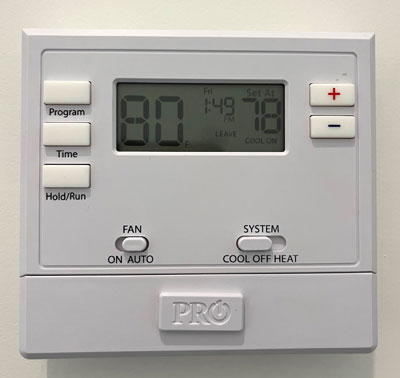 Saving energy costs when you are not at home is a great idea, but you need to do so smartly. That’s where programmable and smart thermostats come in. These thermostats can be set up to raise the temperature in your home when you are away and lower it when you return for a more comfortable environment. Set up a program on your thermostat and keep the system on … DO NOT TURN THE SYSTEM ON AND OFF TO SAVE ENERGY/CONTROL USAGE WHEN YOU ARE NOT HOME. When a system is turned off and heat is allowed to build inside your home, it is incredibly hard to get it to cool back down. Instead, program your thermostat to a higher (but still reasonable) temperature when you are away to keep a more consistent, getter temperature in your home.
Saving energy costs when you are not at home is a great idea, but you need to do so smartly. That’s where programmable and smart thermostats come in. These thermostats can be set up to raise the temperature in your home when you are away and lower it when you return for a more comfortable environment. Set up a program on your thermostat and keep the system on … DO NOT TURN THE SYSTEM ON AND OFF TO SAVE ENERGY/CONTROL USAGE WHEN YOU ARE NOT HOME. When a system is turned off and heat is allowed to build inside your home, it is incredibly hard to get it to cool back down. Instead, program your thermostat to a higher (but still reasonable) temperature when you are away to keep a more consistent, getter temperature in your home.
How to Program Your Thermostat: Because of the many thermostat options out there, it’s impossible to give a step-by-step guide to programming thermostats. Most programmable thermostats have either a program or menu button that will open up programming options. Typically, there are four dayparts: Wake (morning when you are getting ready), Leave (when you leave the home for work), Return (when you get home from work), and Sleep (for overnight/when you are sleeping). You will want to decide what time to start each daypart and what temperature is best for you during those periods. You may need to experiment with times and temperatures a bit to get them right for you. For specific instructions on your thermostat, try Googling the manufacturer and model number of yours to find instructions and videos online. Not sure of the manufacturer and/or model number? Take a photo of the thermostat and use Google’s Image Search.
What temperature should you set your thermostat to: Honestly, there is no “right” temperature, but there are some things to keep in mind while setting temperatures. First, HVAC pros and the U.S. Department of Energy recommend a temperature setting of 78 degrees when you are home in the summer. This may seem high, but it is based on several factors that aim to optimize the energy usage and make your A/C more efficient. Setting a temperature lower than 78 degrees will require the HVAC system to run more frequently and longer, which will cost you more money. Also, if temperatures are in the 90s or higher, your system may struggle to cool to your settings below 78 degrees. Most air conditioning systems can only handle a 20-degree difference between the outside and inside air temperatures. That means, for example, if the temperature is 100 degrees, the system can really only cool efficiently and effectively to 80 degrees. Anything below that will be harder to achieve and will take extra time to get there, if it ever does.
Whatever temperature you decide to set your thermostat to, be very careful not to set it too low for the conditions, which can damage your system. Air conditioners work at a consistent rate to maintain the desired temperature. Turning the temperature way down in an effort to get the home cooler will cause the system to run longer and put added strain on it. Set it too low, and the system can actually freeze up. If this happens, you will see ice in the HVAC system and will have to wait until it thaws before you will be able to use it again. Anything lower than 68 degrees is not recommended for air conditioning.
Have Realistic Expectations
As noted in the above section, air conditioners can typically handle a 20-degree difference between the outside and inside air temperatures. That means that even if you are trying to achieve 74 degrees on a 95-plus day, it may not be possible. As long as your system is producing cool air and your home is not getting hotter, it is working properly, even if it doesn’t reach or takes a while to reach your ideal temperature.
Install Window Coverings and Use Them Properly
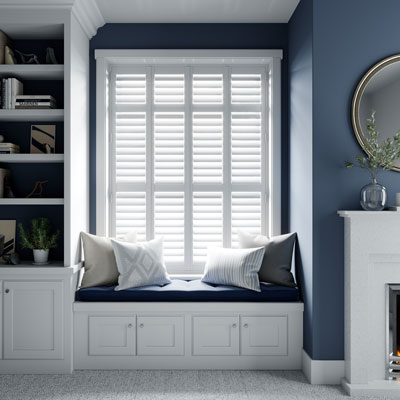 Even with new windows, direct sunlight creates ambient heat that can filter into your home and raise the temperatures. To help prevent added heat from coming in, make sure you have installed window coverings on windows and close them during the sunniest, hottest times of day. If you like having some natural light come into your home, you can keep some open, especially if you are smart about which windows to open and close. If a window faces west, you can open windows in the morning hours but will want to close them in the afternoon and evening when the sun is on that side of the home and will produce more light and heat entering the windows.
Even with new windows, direct sunlight creates ambient heat that can filter into your home and raise the temperatures. To help prevent added heat from coming in, make sure you have installed window coverings on windows and close them during the sunniest, hottest times of day. If you like having some natural light come into your home, you can keep some open, especially if you are smart about which windows to open and close. If a window faces west, you can open windows in the morning hours but will want to close them in the afternoon and evening when the sun is on that side of the home and will produce more light and heat entering the windows.
Heat resistant film windows can also help block heat from coming into your home during summer months (and keep heat in during winter). West-facing windows, in particular, can benefit greatly from film.
Close Vents and Doors in Unused Rooms
If you have rooms you may not be using and therefore don’t need to be as cool as ones you are, consider closing the vents and doors in that room. Closing vents will help push more air to other vents in the home and help cool those areas faster. Closing the doors will allow the air to circulate to other areas of the home better. Just be sure to open the doors back up at night so a room doesn’t get too hot or stuffy over time.
One important note on closing vents: You want to be careful not to close too many vents, which can put added strain on your system and could lead to freezing up of the system. One or two vents closed in unused rooms is good – most vents in the home being closed is not.
Use Fans
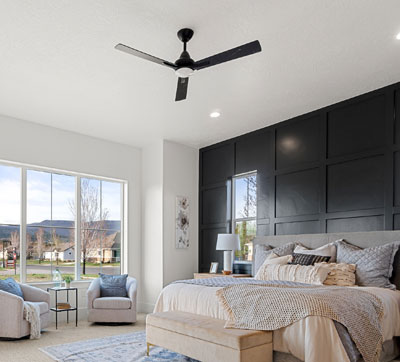 Both ceiling and floor fans won’t necessarily cool the space down, but moving air feels cooler than stagnant air. Using fans in rooms where you are will help make them feel cooler and will allow you to set your A/C at a higher temperature or not feel as hot if the air conditioner struggles to keep up with really hot outdoor temps.
Both ceiling and floor fans won’t necessarily cool the space down, but moving air feels cooler than stagnant air. Using fans in rooms where you are will help make them feel cooler and will allow you to set your A/C at a higher temperature or not feel as hot if the air conditioner struggles to keep up with really hot outdoor temps.
Also, make sure you are using exhaust fans in bathrooms and the kitchen. Exhaust fans are designed to pull hot air out of your home. If you are showering or cooking, using an exhaust fan is a must.
Do Laundry and Dishes at Night
Appliances like washers, dryers, and dishwasher can put off a lot of heat that can contribute to the overall temperature of a home. When it is really hot outside, shifting chores like laundry and dishes to night hours when the sun has gone down can make a difference in minimizing heat in the home.
Limit Indoor Cooking
This won’t come as a surprise, but your stove and oven will add heat to your home. If possible, try to limit indoor cooking during really hot days. Consider grilling, making meals that don’t require cooking, or eating out.
Looking for your dream home? Liberty Homes has been building new homes in Utah for nearly 30 years. We take pride in our trade, crafting each home as if it were our own. Our quality, affordable homes are energy smart and thoughtfully personalized for your active Utah lifestyle. We currently have townhomes available in Salt Lake County, single-family homes in Heber City, and 55-plus single-family homes in West Jordan. Contact us today to find your dream home.

Want home decorating and maintenance tips, craft ideas, recipes, and more delivered right to your inbox?
Sign up for our monthly newsletter:


